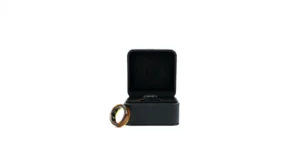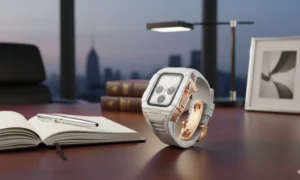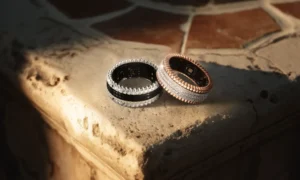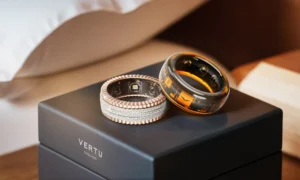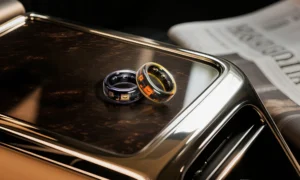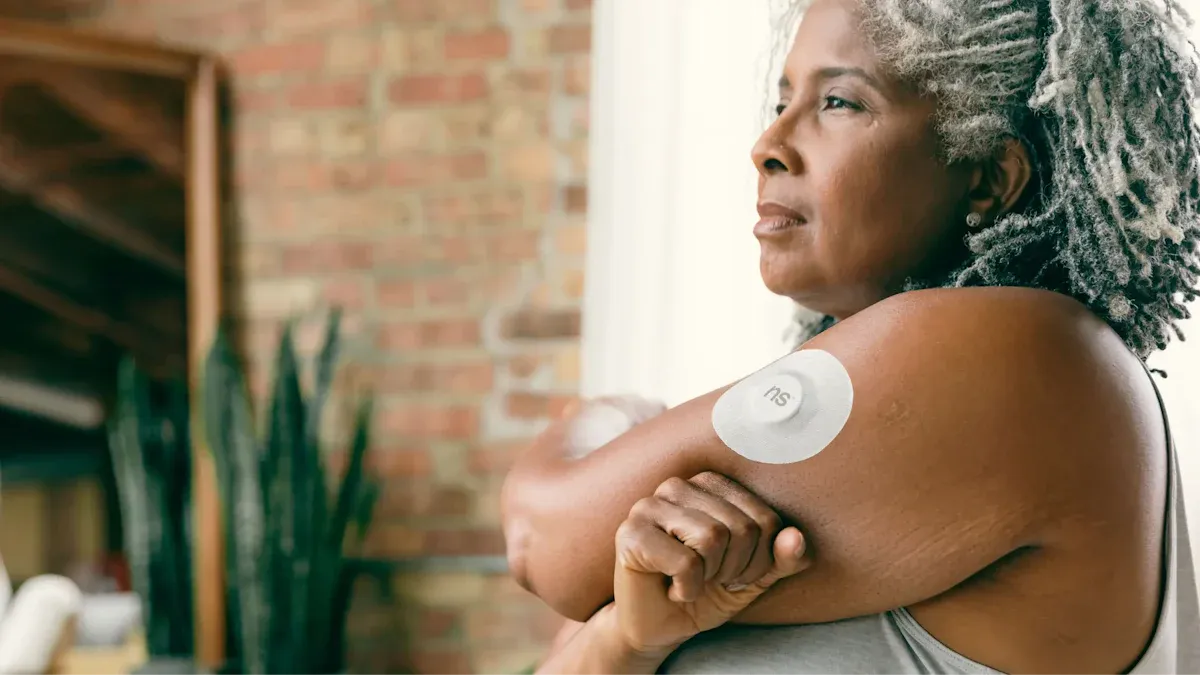
Managing diabetes needs tools to check blood sugar levels. The Vertu AI Diamond Ring – Galaxy Edition is a non-invasive blood glucose smart ring that offers an easy-to-use solution for monitoring your health. While smart rings for blood sugar can be beneficial, it's important to choose wisely, as not all devices are FDA approved. The FDA shares warnings about unapproved rings to ensure you make informed decisions for your health, as inaccurate readings can lead to poor diabetes care and serious health problems.
Key Takeaways
-
Glucose rings that don’t need needles might seem easy to use. But they often give wrong results, so be careful.
-
Always check if the device is approved by the FDA first. Using unapproved devices can harm your health.
-
Wrong readings can make you take bad steps for diabetes care. FDA-approved devices are checked for safety and accuracy.
-
These approved tools give correct data to help control blood sugar. Pick a monitor with features like updates and comfort.
-
This makes it easier to keep track of your health. Ask your doctor about the best tools for managing diabetes.
-
Talking with your doctor helps you get the right care.
What Are Non-Invasive Blood Glucose Smart Rings?
How They Work
Non-invasive glucose rings check blood sugar without needles or samples. They use special sensors and smart technology to gather data. One method, reverse iontophoresis, pulls glucose through the skin using electric currents. The sensor measures glucose levels and turns them into digital data for you to see.
|
Component |
Description |
|---|---|
|
Power Supply |
A rechargeable battery keeps the ring working. |
|
Extraction Method |
Glucose is pulled through the skin using electric currents. |
|
Sensor Mechanism |
Sensors detect glucose with special materials like carbon nanotubes. |
|
Data Processing |
Signals are turned into digital numbers for display. |
These rings connect to apps on your phone. You can check your glucose levels anytime and see patterns. Some rings send alerts if your levels go too high or too low, helping you act quickly.
Intended Purpose
These rings make managing diabetes easier. They track your blood sugar all day and give helpful reports. You can share this data with your doctor to improve your care. Automatic checks and alerts help you stay healthy and avoid problems. Their small size makes them easy to wear every day.
Real-time updates keep you informed about sudden changes in glucose levels. Alerts help you respond fast, lowering risks of complications. These rings combine health tracking with wearable tech for convenience.
Market Trends
Non-invasive glucose rings are becoming more popular. People want wearable devices to track their health. Big companies like Apple and Samsung are working on new glucose monitoring tools.
|
Trend/Statistic |
Description |
|---|---|
|
Rise of Smart Wearables |
Wearable health devices are growing in popularity. |
|
Consumer Awareness |
More people care about fitness and health tracking. |
|
Competitive Landscape |
Tech companies are racing to create better glucose monitors. |
This trend shows people want stylish and accurate health tools. As technology improves, these rings will get even better in the future.
FDA’s Concerns and Warnings
Lack of Regulatory Approval
The FDA has rules for approving medical devices. Non-invasive glucose rings don’t meet these rules. Without approval, their readings can’t be trusted.
The FDA rejects non-invasive glucose devices due to poor accuracy proof. No non-invasive CGM devices meet the FDA’s accuracy standards today.
These rings aren’t tested for safety or reliability. Using them might give wrong blood sugar data. Always check if a device is FDA-approved before using it for health tracking.
Accuracy and Reliability Issues
Non-invasive glucose rings often give wrong results. Their sensors may not work well. Skin thickness, hydration, or temperature can affect their accuracy.
Wrong readings can confuse you about your health. A false low might make you eat sugar you don’t need. A false high could make you take medicine you don’t need. These mistakes can harm your diabetes care and health.
Reliable devices are tested to ensure accuracy. Non-invasive rings skip this testing, making them unreliable. Choose devices that give correct results every time.
Health Risks Highlighted by the FDA
The FDA says unapproved devices can cause serious health problems. Bad diabetes care from wrong readings can lead to hypoglycemia or hyperglycemia. These can cause dizziness, confusion, or even fainting.
Trusting these rings too much might delay medical help. If you rely on them without checking accuracy, you might ignore important symptoms. This delay can make your condition worse and cause long-term problems.
To stay safe, use FDA-approved devices and talk to doctors for proper diabetes care.
Risks of Using Non-Invasive Glucose Rings

False Readings and Mismanagement
Non-invasive glucose rings often give wrong blood sugar results. These mistakes can lead to bad choices for diabetes care. A false low might make you eat sugar you don’t need. A false high could make you take medicine you shouldn’t. Both can upset your blood sugar and harm your health.
Things like skin thickness, hydration, and temperature can confuse the sensors. These factors make it hard for the ring to work correctly. Without good data, you might manage your diabetes poorly and face more health problems.
Tip: Use a trusted method to check blood sugar before making decisions.
Over-Reliance on Unverified Technology
Depending too much on unapproved devices can be risky. Non-invasive glucose rings may seem easy to use, but they aren’t tested for medical accuracy. If you only use these rings, you might miss important signs of blood sugar changes.
Unapproved devices can make you feel safe when they’re not reliable. You might think the ring is helping, even if it’s wrong. This false trust can stop you from asking doctors for help or using proven tools for diabetes care.
Note: Choose FDA-approved devices for safe and accurate monitoring.
Delayed Medical Intervention
Unreliable devices can slow down needed medical care. If the ring gives wrong readings, you might ignore symptoms that need quick attention. For example, a false normal reading could hide signs of low or high blood sugar, causing serious problems.
Waiting too long for treatment can make your condition worse. Early care is key to managing diabetes well. Using unapproved devices can block this and put your health in danger.
Alert: Talk to your doctor if you notice unusual symptoms, no matter what your device says.
Safer Alternatives for Glucose Monitoring
FDA-Approved Devices
Devices approved by the FDA are tested for safety and accuracy. These tools follow strict rules, making them dependable for managing diabetes. Continuous glucose monitoring (CGM) systems are some of the most trusted options. They give real-time updates, helping you track blood sugar all day.
Some studies review how well CGM systems work. These studies show the need for standard testing methods because study designs vary. Even so, FDA-approved devices are known for being accurate and reliable.
Tip: Always pick an FDA-approved device to ensure it meets medical standards.
Features to Look For
When choosing a glucose monitor, focus on accuracy, comfort, and ease of use. Compare invasive, non-invasive, and minimally invasive devices to decide what’s best for you.
|
|
Invasive |
Non-Invasive |
Minimally Invasive |
|---|---|---|---|
|
Advantages |
Very accurate, Tracks trends, Real-time updates |
Painless, Comfortable, No infection risk, Easy to use |
Accurate, Less pain, Tracks trends, Real-time updates, Fewer fingersticks |
|
Disadvantages |
Painful, Can irritate skin, Expensive, Needs doctor help |
May not be accurate, Needs calibration, Costly, Limited choices, Affected by outside factors |
Costly, Needs calibration, Short sensor life, Skin issues, Affected by weather |
Pick devices that give real-time updates and track trends. Look for features like long battery life, waterproofing, and app compatibility to make monitoring easier.
Best Practices for Diabetes Management
Using FDA-approved devices the right way can improve your diabetes care. Research supports helpful tips for glucose monitoring.
|
Recommendation |
Description |
|---|---|
|
Time in Range (TIR) |
|
|
Time Above Range |
Spend <25% of time above range (>180 mg/dL) |
|
Time Below Range |
Spend <4% of time below range (<70 mg/dL) |
-
Use real-time CGM devices every day for better tracking.
-
Scan devices that need manual checks at least every 8 hours.
-
Treat skin issues to make wearing devices more comfortable.
-
Studies show CGM users lower HbA1c by up to 0.64%.
-
Using sensors more often leads to better HbA1c results.
-
Regular checks help you stay in target ranges and avoid problems.
Note: Follow these tips to manage diabetes and stay healthy.
Non-invasive glucose rings, like the Vertu AI Diamond Ring, seem cool. But the FDA warns they might not be safe or accurate. Devices approved by the FDA work better for managing diabetes.
-
Kids with Type 1 Diabetes should use Continuous Glucose Monitoring (CGM).
-
Medicare now covers CGM for adults with Type 2 Diabetes because it works well.
-
Learning how to use CGM helps people manage their diabetes better.
Choose trusted devices and talk to your doctor for advice. Good tools give correct readings and improve your care.
FAQ
What does FDA approval mean for medical devices?
FDA approval shows a device is safe and accurate. It proves the device was tested and works well for medical use. Always check if a device is FDA-approved before using it for health tracking.
Tip: Find the FDA logo or certification on the product box.
Can non-invasive glucose rings replace traditional methods?
No, these rings cannot replace fingerstick tests or FDA-approved CGM systems. They are often not accurate or reliable, which can lead to wrong readings and bad diabetes care.
Alert: Stick to traditional methods for accurate results.
Are non-invasive glucose rings safe to use?
These rings might not be safe because they aren’t proven accurate. They also lack FDA approval, which raises safety concerns. Wrong readings can cause health problems. Always ask your doctor before trying these devices.
How can I choose the right glucose monitoring device?
Pick FDA-approved devices with features like real-time updates and trend tracking. Look for ones that are easy to use, comfortable, and accurate. Compare different options to find what works best for you.
Note: Do your research before buying any device.
Why does the FDA warn against non-invasive glucose rings?
The FDA warns about these rings because they aren’t approved and often give wrong readings. This can delay medical care and cause serious health issues. Only trust devices that meet FDA standards.



